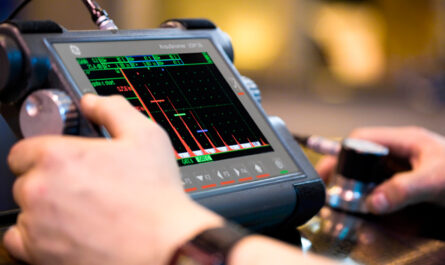Over the past few decades, wireless connectivity has revolutionized how we connect, share information and access the internet. From radio waves to Wi-Fi, our world has become more connected than ever before. However, as wireless data usage continues to grow exponentially with each passing year, the existing radio frequency bandwidth is fast running out of capacity. This is where a new wireless technology called Li-Fi comes into play that promises to revolutionize connectivity just as Wi-Fi did a few decades back.
What is Li-Fi?
An Introduction to the Technology
Li-Fi or Light Fidelity is a wireless optical networking technology that uses light-emitting diodes (LEDs) for data transmission. Just like Wi-Fi technology uses radio waves to transmit data wirelessly, Li-Fi uses visible light communication (VLC) for the same purpose. In Li-Fi, an LED light bulb is modulated at a frequency that is undetectable to the human eye. Data is transmitted through these light bulbs, which can be detected by photodetectors (small receivers with photo diodes). These LED bulbs can be switched on/off much faster than what is perceptible to the human eye. By switching on and off exceedingly fast (measured in kHz), data can be transmitted through variations in light intensity. During transmission, the LED bulbs are imperceptibly dimmed based on the data being transmitted. On the receiving end, photodetectors convert light signals into an electric current that can then be processed to extract data from it. In a Li-Fi setup, any light source like an LED lamp or panel can transmit and receive data through light waves similar to electromagnetic waves used in radio-based Wi-Fi.
Advantages of Li-Fi over Wi-Fi
Some key advantages of Li-Fi over conventional radio-based Wi-Fi include:
Higher Speed: Li-Fi can deliver data at much higher speeds up to hundreds of times faster than Wi-Fi. While the maximum theoretical speed of Wi-Fi is around 1 Gbps, Li-Fi’s maximum theoretical speed is 10 Gbps currently and is expected to reach up to 100 Gbps in the future.
Large Bandwidth: Li-Fi has a vastly larger and unused optical spectrum bandwidth compared to the crowded radio frequency bandwidth used by Wi-Fi. This allows Li-Fi to deliver ultra-high speed broadband internet connections.
Immunity to radio wave interference: Unlike Wi-Fi, Li-Fi uses light waves that are not affected by radio wave interference. This makes it highly secure and ideal for areas that demand high security such as hospitals or defense facilities.
Eco-friendly: Li-Fi uses visible light which is safer and more eco-friendly compared to potentially harmful radio waves used in Wi-Fi. This makes it suitable for use in energy-efficient smart buildings and eco-cities.
Cost-effectiveness: Li-Fi systems can be easily installed by using LED light bulbs that are now commercially available at relatively low costs compared to setting up multiple Wi-Fi access points. This makes Li-Fi a very cost-effective solution for indoor connectivity needs.
Reliability and availability: LED light bulbs provide reliability and are safely available in indoor areas like underground tunnels, planes, hospitals where radio signals may not be available or allowed. This makes Li-Fi connectivity highly reliable and available everywhere.
Applications and Use Cases of Li-Fi Technology
With its unmatched advantages, Light Fidelity is finding numerous applications across various industry verticals including:
High-Speed Networking: Li-Fi is ideal for deploying high-speed wireless networks at homes and offices to deliver ultra-high broadband internet access through light bulbs. Its high speeds make it perfect for broadband data, 4k video downloads, VR/AR applications.
Smart Offices and Meeting Rooms: Li-Fi enabled LED lighting can deliver high-speed wireless hotspots in offices for seamless connectivity experience across rooms and workstations. Multiple access points enable connectivity without interference.
Smart Homes and IoT: Li-Fi enabled bulbs and fixtures can support a wide range of smart home and IoT devices in an energy-efficient manner. Secure connectivity through light makes automation more reliable.
Underwater and Underground Connectivity: Using its unique advantages, Li-Fi can deliver wireless connectivity for underwater vehicles, divers, underground tunnelling and mining operations where radio signals don’t reach or allowed.
Aerospace and Aviation: Li-Fi is finding uses in airplane cabins for secure high-speed connectivity. It can minimize electromagnetic interference in sensitive avionics and navigation systems.
Street Lighting and Outdoor Connectivity: Li-Fi street lamps and traffic lights can deliver ultra-high-speed wireless connectivity outdoors in public places without any radio interference.
Automotive and Intelligent Transportation: Vehicles with Li-Fi connectivity can enable infotainment, autonomous driving features, traffic signal communication for smarter transportation.
Hospitals and Healthcare: Li-Fi is ideal for delivering secure high-speed connectivity in areas like operating theatres where sensitive equipment cannot tolerate electromagnetic interference from radio waves.
Future of Li-Fi Technology
With mature technology and global standards in place, Li-Fi is well-positioned for mainstream commercial adoption within this decade. The market is expected to grow exponentially as deployments increase across industry verticals. Semiconductor companies are developing innovative Li-Fi compatible LED bulbs, chips, modules to tap the huge market potential. Meanwhile, researchers continue to advance the technology further by developing solutions that increase speeds and coverage areas of Li-Fi networks. In the near future, your home, office or vehicle interior might see integration of Li-Fi hotspots for connectivity delivered through LED luminaires instead of Wi-Fi access points. As Li-Fi evolves further, it will transform how we experience wireless internet access in an energy-efficient and future-proof manner. With its revolutionary characteristics, Li-Fi undoubtedly represents the future of wireless connectivity.
Note:
1. Source: Coherent Market Insights, Public sources, Desk research
2. We have leveraged AI tools to mine information and compile it




